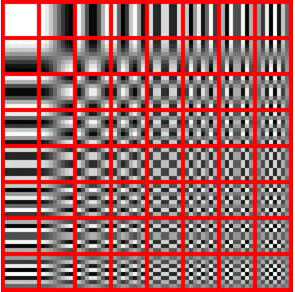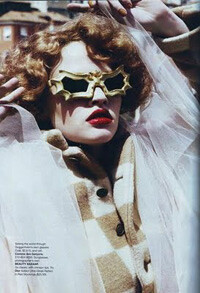A standard way of relating politics to art assumes that art represents political issues in one way or another. But there is a much more interesting perspective: the politics of the field of art as a place of work.1 Simply look at what it does—not what it shows.
Amongst all other forms of art, fine art has been most closely linked to post-Fordist speculation, with bling, boom, and bust. Contemporary art is no unworldly discipline nestled away in some remote ivory tower. On the contrary, it is squarely placed in the neoliberal thick of things. We cannot dissociate the hype around contemporary art from the shock policies used to defibrillate slowing economies. Such hype embodies the affective dimension of global economies tied to ponzi schemes, credit addiction, and bygone bull markets. Contemporary art is a brand name without a brand, ready to be slapped onto almost anything, a quick face-lift touting the new creative imperative for places in need of an extreme makeover, the suspense of gambling combined with the stern pleasures of upper-class boarding school education, a licensed playground for a world confused and collapsed by dizzying deregulation. If contemporary art is the answer, the question is: How can capitalism be made more beautiful?
But contemporary art is not only about beauty. It is also about function. What is the function of art within disaster capitalism? Contemporary art feeds on the crumbs of a massive and widespread redistribution of wealth from the poor to the rich, conducted by means of an ongoing class struggle from above.2 It lends primordial accumulation a whiff of postconceptual razzmatazz. Additionally, its reach has grown much more decentralized—important hubs of art are no longer only located in the Western metropolis. Today, deconstructivist contemporary art museums pop up in any self-respecting autocracy. A country with human rights violations? Bring on the Gehry gallery!
The Global Guggenheim is a cultural refinery for a set of post-democratic oligarchies, as are the countless international biennials tasked with upgrading and reeducating the surplus population.3 Art thus facilitates the development of a new multipolar distribution of geopolitical power whose predatory economies are often fueled by internal oppression, class war from above, and radical shock and awe policies.
Contemporary art thus not only reflects, but actively intervenes in the transition towards a new post-Cold War world order. It is a major player in unevenly advancing semiocapitalism wherever T-Mobile plants its flag. It is involved in mining for raw materials for dual-core processors. It pollutes, gentrifies, and ravishes. It seduces and consumes, then suddenly walks off, breaking your heart. From the deserts of Mongolia to the high plains of Peru, contemporary art is everywhere. And when it is finally dragged into Gagosian dripping from head to toe with blood and dirt, it triggers off rounds and rounds of rapturous applause.


Why and for whom is contemporary art so attractive? One guess: the production of art presents a mirror image of post-democratic forms of hypercapitalism that look set to become the dominant political post-Cold War paradigm. It seems unpredictable, unaccountable, brilliant, mercurial, moody, guided by inspiration and genius. Just as any oligarch aspiring to dictatorship might want to see himself. The traditional conception of the artist’s role corresponds all too well with the self-image of wannabe autocrats, who see government potentially—and dangerously—as an art form. Post-democratic government is very much related to this erratic type of male-genius-artist behavior. It is opaque, corrupt, and completely unaccountable. Both models operate within male bonding structures that are as democratic as your local mafia chapter. Rule of law? Why don’t we just leave it to taste? Checks and balances? Cheques and balances! Good governance? Bad curating! You see why the contemporary oligarch loves contemporary art: it’s just what works for him.
Thus, traditional art production may be a role model for the nouveaux riches created by privatization, expropriation, and speculation. But the actual production of art is simultaneously a workshop for many of the nouveaux poor, trying their luck as jpeg virtuosos and conceptual impostors, as gallerinas and overdrive content providers. Because art also means work, more precisely strike work.4 It is produced as spectacle, on post-Fordist all-you-can-work conveyor belts. Strike or shock work is affective labor at insane speeds, enthusiastic, hyperactive, and deeply compromised.
Originally, strike workers were excess laborers in the early Soviet Union. The term is derived from the expression “udarny trud” for “superproductive, enthusiastic labor” (udar for “shock, strike, blow”). Now, transferred to present-day cultural factories, strike work relates to the sensual dimension of shock. Rather than painting, welding, and molding, artistic strike work consists of ripping, chatting, and posing. This accelerated form of artistic production creates punch and glitz, sensation and impact. Its historical origin as format for Stalinist model brigades brings an additional edge to the paradigm of hyperproductivity. Strike workers churn out feelings, perception, and distinction in all possible sizes and variations. Intensity or evacuation, sublime or crap, readymade or readymade reality—strike work supplies consumers with all they never knew they wanted.
Strike work feeds on exhaustion and tempo, on deadlines and curatorial bullshit, on small talk and fine print. It also thrives on accelerated exploitation. I’d guess that—apart from domestic and care work—art is the industry with the most unpaid labor around. It sustains itself on the time and energy of unpaid interns and self-exploiting actors on pretty much every level and in almost every function. Free labor and rampant exploitation are the invisible dark matter that keeps the cultural sector going.
Free-floating strike workers plus new (and old) elites and oligarchies equal the framework of the contemporary politics of art. While the latter manage the transition to post-democracy, the former image it. But what does this situation actually indicate? Nothing but the ways in which contemporary art is implicated in transforming global power patterns.
Contemporary art’s workforce consists largely of people who, despite working constantly, do not correspond to any traditional image of labor. They stubbornly resist settling into any entity recognizable enough to be identified as a class. While the easy way out would be to classify this constituency as multitude or crowd, it might be less romantic to ask whether they are not global lumpenfreelancers, deterritorialized and ideologically free-floating: a reserve army of imagination communicating via Google Translate.
Instead of shaping up as a new class, this fragile constituency may well consist—as Hannah Arendt once spitefully formulated—of the “refuse of all classes.” These dispossessed adventurers described by Arendt, the urban pimps and hoodlums ready to be hired as colonial mercenaries and exploiters, are faintly (and quite distortedly) mirrored in the brigades of creative strike workers propelled into the global sphere of circulation known today as the art world.5 If we acknowledge that current strike workers might inhabit similarly shifting grounds—the opaque disaster zones of shock capitalism—a decidedly un-heroic, conflicted, and ambivalent picture of artistic labor emerges.
We have to face up to the fact that there is no automatically available road to resistance and organization for artistic labor. That opportunism and competition are not a deviation of this form of labor but its inherent structure. That this workforce is not ever going to march in unison, except perhaps while dancing to a viral Lady Gaga imitation video. The international is over. Now let’s get on with the global.
Here is the bad news: political art routinely shies away from discussing all these matters.6 Addressing the intrinsic conditions of the art field, as well as the blatant corruption within it—think of bribes to get this or that large-scale biennial into one peripheral region or another—is a taboo even on the agenda of most artists who consider themselves political. Even though political art manages to represent so-called local situations from all over the globe, and routinely packages injustice and destitution, the conditions of its own production and display remain pretty much unexplored. One could even say that the politics of art are the blind spot of much contemporary political art.


Of course, institutional critique has traditionally been interested in similar issues. But today we need a quite extensive expansion of it.7 Because in contrast to the age of an institutional criticism, which focused on art institutions, or even the sphere of representation at large, art production (consumption, distribution, marketing, etc.) takes on a different and extended role within post-democratic globalization. One example, which is a quite absurd but also common phenomenon, is that radical art is nowadays very often sponsored by the most predatory banks or arms traders and completely embedded in rhetorics of city marketing, branding, and social engineering.8 For very obvious reasons, this condition is rarely explored within political art, which is in many cases content to offer exotic self-ethnicization, pithy gestures, and militant nostalgia.
I am certainly not arguing for a position of innocence.9 It is at best illusory, at worst just another selling point. Most of all it is very boring. But I do think that political artists could become more relevant if they were to confront these issues instead of safely parade as Stalinist realists, CNN situationists, or Jamie-Oliver-meets-probation-officer social engineers. It’s time to kick the hammer-and-sickle souvenir art into the dustbin. If politics is thought of as the Other, happening somewhere else, always belonging to disenfranchised communities in whose name no one can speak, we end up missing what makes art intrinsically political nowadays: its function as a place for labor, conflict, and…fun—a site of condensation of the contradictions of capital and of extremely entertaining and sometimes devastating misunderstandings between the global and the local.


The art field is a space of wild contradiction and phenomenal exploitation. It is a place of power mongering, speculation, financial engineering, and massive and crooked manipulation. But it is also a site of commonality, movement, energy, and desire. In its best iterations it is a terrific cosmopolitan arena populated by mobile shock workers, itinerant salesmen of self, tech whiz kids, budget tricksters, supersonic translators, PhD interns, and other digital vagrants and day laborers. It’s hard-wired, thin-skinned, plastic-fantastic. A potential commonplace where competition is ruthless and solidarity remains the only foreign expression. Peopled with charming scumbags, bully-kings, almost-beauty-queens. It’s HDMI, CMYK, LGBT. Pretentious, flirtatious, mesmerizing.
This mess is kept afloat by the sheer dynamism of loads and loads of hardworking women. A hive of affective labor under close scrutiny and controlled by capital, woven tightly into its multiple contradictions. All of this makes it relevant to contemporary reality. Art affects this reality precisely because it is entangled into all of its aspects. It’s messy, embedded, troubled, irresistible. We could try to understand its space as a political one instead of trying to represent a politics that is always happening elsewhere. Art is not outside politics, but politics resides within its production, its distribution, and its reception. If we take this on, we might surpass the plane of a politics of representation and embark on a politics that is there, in front of our eyes, ready to embrace.
I am expanding on a notion developed by Hongjohn Lin in his curatorial statement for the Taipei Biennial 2010. Hongjohn Lin, “Curatorial Statement,” in 10TB Taipei Biennial Guidebook (Taipei: Taipei Fine Arts Museum, 2010), 10–11.
This has been described as a global and ongoing process of expropriation since the 1970s. See David Harvey, A Brief History of Neoliberalism (Oxford: Oxford University Press, 2005). As for the resulting distribution of wealth, a study by the Helsinki-based World Institute for Development Economics Research of the United Nations University (UNU-WIDER) found that in the year 2000, the richest 1 percent of adults alone owned 40 percent of global assets. The bottom half of the world’s adult population owned 1 percent of global wealth. See →.
For just one example of oligarch involvement, see →. While such biennials span from Moscow to Dubai to Shanghai and many of the so-called transitional countries, we shouldn’t consider post-democracy to be a non-Western phenomenon. The Schengen area is a brilliant example of post-democratic rule, with a whole host of political institutions not legitimized by popular vote and a substantial section of the population excluded from citizenship (not to mention the Old World’s growing fondness for democratically-elected fascists). The current exhibition “The Potosí-Principle,” organized by Alice Creischer, Andreas Siekmann, and Max Jorge Hinderer, highlights the connection between oligarchy and image production from another historically relevant perspective.
I am drawing on a field of meaning developed by Ekaterina Degot, Cosmin Costinas, and David Riff for their 1st Ural Industrial Biennial, 2010.
Arendt may have been wrong on the matter of taste. Taste is not necessarily a matter of the common, as she argued, following Kant. In this context, it is a matter of manufacturing consensus, engineering reputation, and other delicate machinations, which—whoops—metamorphose into art-historical bibliographies. Let’s face it: the politics of taste are not about the collective, but about the collector. Not about the common but about the patron. Not about sharing but about sponsoring.
There are of course many laudable and great exceptions, and I admit that I myself may bow my head in shame, too.
As is also argued in the reader Institutional Critique, eds. Alex Alberro and Blake Stimson (Cambridge, MA: The MIT Press, 2009). See also the collected issues of the online journal transform: →.
Recently on show at Henie Onstad Kunstsenter in Oslo was “Guggenheim Visibility Study Group,” a very interesting project by Nomeda and Gediminas Urbonas that unpacked the tensions between local (and partly indigenist) art scenes and the Guggenheim franchise system, with the Guggenheim effect analyzed in detail in a case study. See →. Also see Joseba Zulaika, Guggenheim Bilbao Museoa: Museums, Architecture, and City Renewal (Reno: Center for Basque Studies, University of Nevada, 2003). Another case study: Beat Weber, Therese Kaufmann, “The Foundation, the State Secretary and the Bank – A Journey into the Cultural Policy of a Private Institution,” →. See also Martha Rosler, “Take the Money and Run? Can Political and Socio-critical Art ‘Survive’?” e-flux journal, issue 12, →, and Tirdad Zolghadr, “11th Istanbul Biennial,” →.
This is evident from this text’s placement on e-flux as an advertisement supplement. The situation is furthermore complicated by the fact that these ads may well flaunt my own shows. At the risk of repeating myself, I would like to emphasize that I do not consider innocence a political position, but a moral one, and thus politically irrelevant. An interesting comment on this situation can be found in Luis Camnitzer, “The Corruption in the Arts / the Art of Corruption,” published in the context of The Marco Polo Syndrome, a symposium at the House of World Cultures in April, 1995. See →.
Category
This text is dedicated to the people who bear with me through digital hysteria, frequent flyer syndrome, and installation disasters. Thanks especially to Tirdad, Christoph, David, and Freya. Also Brian for the edit, as always.